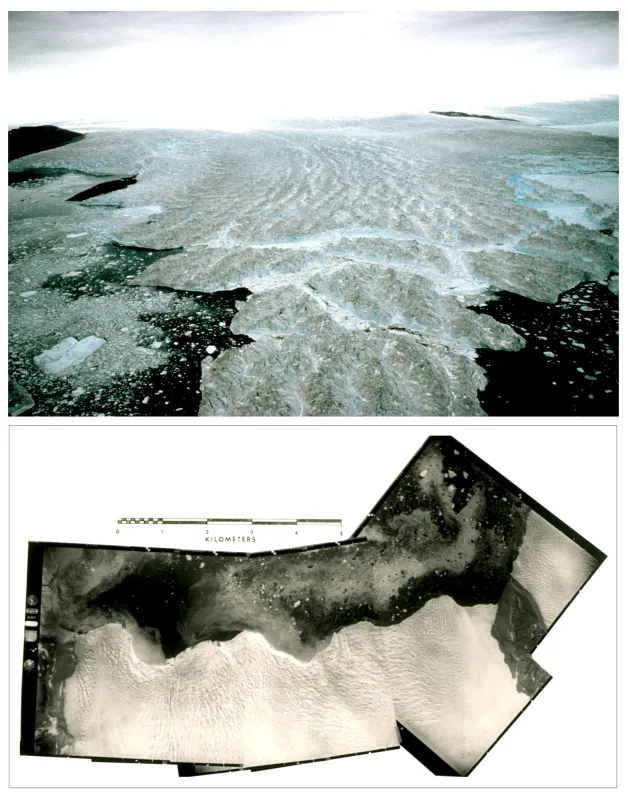By Natasha Vizcarra
Researchers in Boulder and Zurich are gaining ground in compiling the most extensive record of Earth’s constantly changing glaciers. Using data from aerial photographs and maps, the National Snow and Ice Data Center (NSIDC) and the World Glacier Monitoring Service (WGMS) have added 25,000 more glaciers to World Glacier Inventory (WGI), bringing the total to 132,890.
The inventory now describes 85 percent of Earth’s estimated 160,000 glaciers, or 70 percent (470,000 square kilometers) of the total estimated area covered by glaciers and ice caps (680,000 square kilometers).
Glaciers are slowly moving rivers of ice made up of fallen snow that, over the years, compressed into large, thickened ice masses. Some are the size of football fields while others grow to be over a hundred kilometers long. Scientists study glaciers because these are a large source of fresh water and are among the most sensitive indicators of climate change.
How much ice
“How many glaciers are there on Earth? That’s a good question, but a very hard one to answer,” said NSIDC glaciologist Bruce Raup. When glaciers grow or retreat over time, they can either merge into a bigger one or get divided into smaller ones. Estimates of the total number of glaciers vary hugely, from 160,000 to 300,000.
“It’s easier and more important to keep track of how many square kilometers are covered by glaciers,” Raup said. “Say a glacier retreats up a valley and its tributaries get separated. Where you once had one glacier, you now have three. But then you also have less ice.”
How much ice a glacier contains or has lost interests scientists the most. Each glacier in the inventory is described by geographic location, area, length, width, elevation, glacier classification and form, orientation, and ablation (how much snow or ice the glacier has lost) and accumulation area. Using these, scientists can derive information on how climate is changing and how much glacial melt is contributing to rising sea levels.
Ambitious effort
The inventory has been valuable in helping build other glacier databases. The Global Land Ice Measurements from Space (GLIMS), a database of glacier outlines from satellite data, draws on and extends information from the inventory and is monitoring changes in 93,000 glaciers. The Randolph Glacier Inventory, in turn, expands on GLIMS to produce a complete map of where all glaciers are on Earth, in preparation for the Fifth Assessment Report of the Intergovernmental Panel on Climate Change.
“The World Glacier Inventory is the oldest of modern glacier inventories,” Raup said. “It’s a global, collaborative effort and is rooted in work that began in the 1890s as an ambitious attempt to measure and classify all perennial ice masses on Earth.”
Glaciers recently added to the inventory are located in the Antarctic Peninsula, the Antarctic Islands, South Patagonia, the Central Andes, Iceland, Greenland, and Baffin Island and Yukon in Canada. NSIDC and the WGMS will continue to update and improve the inventory as more data becomes available.
References
Dyurgerov, M. B. and M. F. Meier. 2005. Glaciers and the changing Earth system: a 2004 snapshot. Institute of Arctic and Alpine Research, Occasional Paper 58. Meier, M. F. and D. B. Bahr. 1996. Counting glaciers: Use of scaling methods to estimate the number and size distribution of the glaciers of the world. CRREL Spec. Rep., 96, 89–94.
